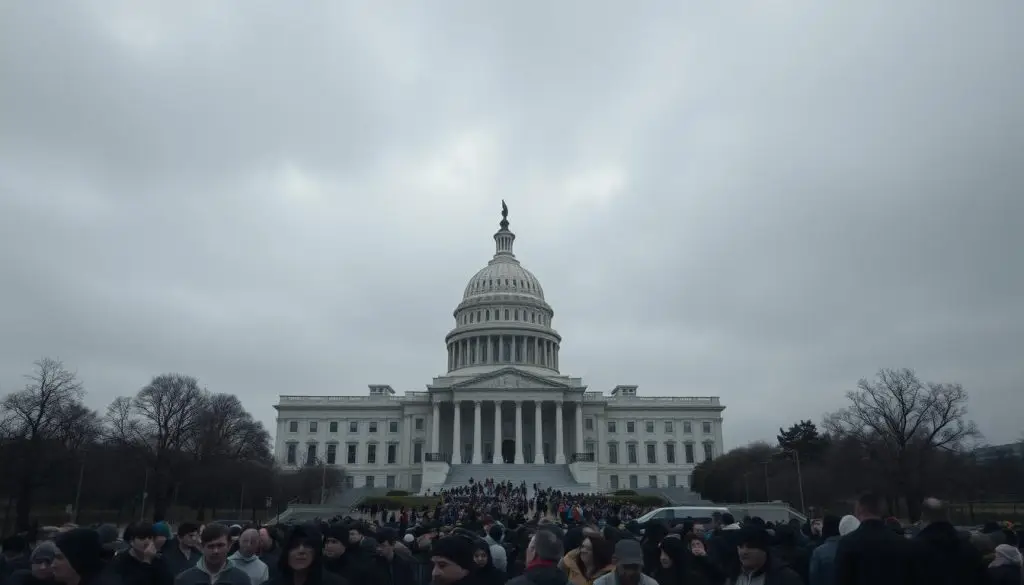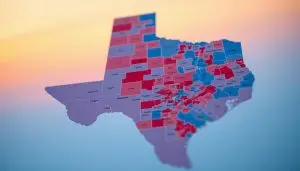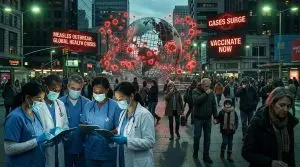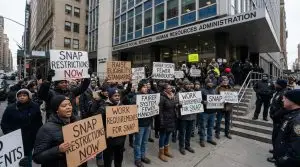Was Anything Gained in 43 days of Government Shutdown?
Explore the aftermath of the 43-day Government Shutdown, its enduring effects, and the ongoing challenges as the suspense continues.

Click to summarize this article.
- I pondered the 43-day pause and wondered what we gained. The Government Shutdown started as a way to force action on Affordable Care Act subsidies. Days went by, paychecks stopped, and tempers rose.
But clarity emerged on costs, priorities, and the shutdown’s real-life effects. The White House said the Government shutdown was near its end a week ago, but they were wrong. And why did the shutdown even start in the first place? bureaucracy, and the separation of the parties, who cant agree on anything, is what started it.
Democrats wanted to extend Obamacare tax credits. They eventually accepted a plan for a vote by mid-December. This move was seen as a compromise by some, but others felt it was a give-in to Donald Trump and Speaker Mike Johnson.
Yet, party leaders believed it strengthened their message on healthcare. They thought it would energize voters in New Jersey and Virginia. I kept asking myself: was the pain worth the lesson?
Some real gains were made. A minibus funded by the government will be available until next fall. Other areas got a temporary fix until January 30. SNAP was secured until September 2026, and federal workers got protection from big layoffs.
Sen. Tim Kaine mentioned relief for thousands of workers in Virginia—no more fear of layoff emails. Sen. Jeanne Shaheen said the standoff highlighted the fight over affordability. This shutdown update warns of rising premiums and a louder battle ahead.
As I followed the news of the shutdown, I thought about the small wins and unseen losses. The story is paused, like a held breath, waiting for the next big decision. For more, see this shutdown analysis.
Key Takeaways
- A 43-day Government Shutdown delivered partial funding wins but no firm extension of ACA tax credits.
- Minibus bills funded some agencies through next fall, with short-term coverage for the rest through January 30.
- SNAP is secured through September 2026, limiting the effects of government shutdown on food assistance.
- Federal workers gained protections against mass RIFs and saw paths to reinstatement.
- Democrats argue that the standoff unified their message on affordability and healthcare.
- Republican resistance, aligned with Donald Trump and Speaker Mike Johnson, frames the next fight.
- The government shutdown update highlights rising premiums as a potential flashpoint heading into 2026.
What Caused the Standoff and What Democrats Sought
I often wondered what leads to a government shutdown, even when both sides care about families. The answer was both complex and personal. Funding bills were stalled, and the shutdown became a means to force a decision on healthcare costs. These costs were real, affecting monthly bills and everyday life.
At the heart of it was a simple demand: keep the Affordable Care Act subsidies that were boosted during the pandemic. If these subsidies were to end on December 31, millions would face higher bills. This was a critical moment, as open enrollment messages were about to arrive in inboxes.
Government shutdown explained: the push to extend Affordable Care Act subsidies.
Here’s a simple explanation of the government shutdown. Democrats wanted to extend ACA tax credits to prevent premium hikes for over 20 million Americans. They used public attention to push their strategy.
Eight Senate Democrats, including former governors, joined Republicans to advance a deal on a 60-40 vote. This paved the way for a later vote on the credits. For more information, see the report on the Senate deal and ACA funds.
- Core demand: extend ACA subsidies to prevent premium spikes.
- Immediate impact: spotlight on affordability during open enrollment.
- Short-term outcome: a possible vote on tax credits in December, not guaranteed.
How long can a government shutdown last: context for the 43-day impasse
People asked me how long a shutdown could last, and I made a point to clarify. This one lasted 43 days, the longest on record. Both sides used the calendar as a means of leverage.
Weeks went by, and the focus shifted from process to purpose. The shutdown’s length became a message, showing what happens when policy and principle clash.
“Time is the arena where values meet consequence.”
Why Democrats initiated the shutdown: health care affordability and expiring Obamacare tax credits
Democrats initiated the standoff to protect families from higher premiums resulting from the expiration of Obamacare tax credits. They argued that waiting would let costs rise before Congress acted. It made sense to act now to avoid later shock.
The shutdown was seen as a warning, not just a protest. It was about simple math on a monthly bill, where a few hundred dollars can be a crisis.
- What causes a government shutdown in this case: a bid to keep ACA relief in place.
- Primary risk cited: premium hikes landing before any fix.
- Strategic aim: force a vote while the public watched.
Internal party tensions: progressive activists versus dealmaking pragmatists
Inside the party, a real split existed. Progressive voices, such as Elizabeth Warren and Bernie Sanders, advocated for maintaining subsidies. Activists were active, filling town halls and timelines.
Pragmatists, including eight Senate Democrats, favored partial wins over stalemate. Their approach led to a 60-40 vote, keeping the lights on but leaving tax credits for later. This debate highlighted the tug-of-war between ideals and incremental changes in public view.
Ultimately, I kept asking myself questions. How long can a shutdown last before its cause is lost in the noise? And when we ask what causes a shutdown, do we hear policy or the human impact of higher costs?
Government Shutdown: Concrete Outcomes, Small Wins, and Missed Goals
I keep replaying the ledger in my head. What did the Government Shutdown actually change, and for whom? I felt the strain in airport lines and in grocery budgets. The effects of the government shutdown touched neighbors, coworkers, and even strangers.
The picture that emerges is mixed. A few protections gained, a few doors left closed. The consequences of the government shutdown are echoing through daily life.

Effects of government shutdown on federal workers: reinstatements and protections from mass RIFs
I first heard about it from friends in Northern Virginia. Relief—cautious but real. Lawmakers backed assurances that federal staffers hit by reductions in force would be reinstated.
Sen. Tim Kaine spoke of a cloud lifting from a workforce that has endured years of uncertainty. It does not erase lost sleep or delayed bills, yet it blunts the harshest consequences of the government shutdown.
Backpay helps, yes. But as I watched the lines of commuters shuffle into agencies once the doors reopened, I wondered: What is the lasting impact of the government shutdown on the economy when trust continues to fray? Paychecks return; anxiety lingers.
SNAP funding secured through September 2026, and limits on using food stamps as leverage
Food should never be a bargaining chip. This deal funds SNAP through September 2026 and limits the use of food stamps as leverage in future fights. That matters to families who budget week to week and to grocers on the margins.
During the standoff, talk of halted state payments made the stakes plain. Now, at least, the fridge is less likely to become a battlefield.
In my own city, I saw pantries stretch, volunteers rush, parents do the math in the aisle. The effects of a government shutdown are not abstract when a cart holds dinner and dignity. Securing SNAP buys time—and a measure of calm.
Minibus appropriations and short-term funding through January 30
On spending, Congress pushed a minibus of three appropriations bills into next fall, while the rest run on a short-term bridge to January 30. I feel the constant stop-and-go in my bones—like driving a highway with surprise barricades.
The government shutdown’s impact on the economy is evident in small ways: delayed contracts, paused hiring, and projects that start, stall, and then restart.
Air travel offers a more transparent window. During the standoff, the FAA warned of trimming traffic at major hubs, and reduced capacity has a ripple effect on the rest of the system. One delayed flight becomes ten. One missed delivery becomes a week of scarcity. The gears work, but they grind.
What was not achieved: no guarantee to renew expiring ACA tax credits, only a promised Senate vote
Here is the gap I cannot ignore. The demand to renew ACA tax credits did not land. Instead, there’s only a promise: a Senate vote by mid-December, offered by Minority Leader John Thune—no matching pledge from the House. For families facing premium hikes, a promise is not a substitute for a policy.
Progressives, such as Elizabeth Warren and Bernie Sanders, called this a missed opportunity. I feel that sting. Without swift action, premiums rise while we wait. The Government Shutdown ends, the noise fades, yet the bill comes due.
For context on the 43-day grind and its reach—from furloughs to air travel—see this report on who felt the squeeze. And for how prolonged uncertainty can force cuts to air traffic and threaten health coverage, this overview of the evolving standoff traces the pressure points.
So what remains with me? The effects of the government shutdown did not vanish when the doors reopened. The consequences of the government shutdown are echoing through daily life. And the government shutdown’s impact on the economy keeps asking the same question I do: how many near-misses can a country absorb before the next one is not so near?
Political Fallout and the Health Care Fight Ahead
Walking out of the Government Shutdown, I felt the ground shift. People asked me, “What causes a government shutdown?” and “Who pays the price?” Health care costs, SNAP pressure, and trust issues dominated every conversation.
I’m trying to understand what changed and what didn’t. The record-breaking shutdown update showed us how a 43-day pause can reflect our society. Workers were furloughed, airports were crowded, and the debate on affordability grew louder. It was as if the stakes had faces.
Democratic messaging gains: affordability, health insurance, and voter mobilization
Democrats focused on making health care affordable. Sen. Ruben Gallego and Rep. Suzan DelBene spoke about premiums and coverage in a way that resonated with the audience. They framed the issue as a choice for Republicans.
After weeks of shutdown news, people connected rising bills to policy delays. The message was relatable and hinted at voter mobilization.
Republican posture under Trump and Speaker Johnson: opposition framed by Democrats
Democrats portrayed Donald Trump and Speaker Mike Johnson as opposing the extension of subsidies. They linked GOP actions to higher costs and pressure on SNAP. Was this fair, or just politics? Voters will decide.
In this update, party roles became clear. One side pushed for relief, while the other advocated for restraint. Each side attempted to portray the other’s intentions in a negative light.
Government shutdown news and update: crystallizing battle lines for the 2026 midterms
Sen. Jeanne Shaheen said the fight clarified party lines. Open enrollment revealed premium shocks, turning into a civics lesson. The memory of Trump’s repeal push resurfaced, with a promise to fight costs.
By the end, the 2026 midterms looked more defined. The next time you ask about a government shutdown, the answer might be the same: values clash over health care and who bears the burden.
Consequences and public perception: from “cave” narrative to strategic awareness of rising premiums
Progressives called it a cave. Pragmatists saw worker pay, back pay, and a steady floor for families. I felt both sides. One wants a win now; the other waits for later.
Rising premiums create a constant drumbeat. If promises fade, the backlash grows. But if action comes, today’s words become tomorrow’s trust.
Government Shutdown Conclusion
The Government Shutdown was a paradox. It caused pain but also showed us new possibilities. Democrats pushed for a debate on health care costs, but the renewal of ACA tax credits was delayed.
Was it worth it? Families felt the impact, and the question remains. There were some good outcomes, though. Federal workers got back pay and protection from layoffs.
SNAP funding is secure until September 2026, which will help many families. But the shutdown’s effects were far-reaching. Flight delays and uncertainty were common, and public trust was shaken.
Progressive voices saw it as a loss, while party dealmakers saw it as a win. The shutdown’s impact on the economy was clear. The lost growth and billions of dollars erased each week highlighted the cost of gridlock.
This reporting on the shutdown highlights the stakes. Over 42 million Americans rely on food aid, and federal paychecks support local communities.
So, what did we learn? The shutdown was a mirror, showing who will protect people’s benefits. It mapped the road ahead but didn’t pave it. The next challenge is clear: will Congress make lasting changes, or will we face the same problems again?









